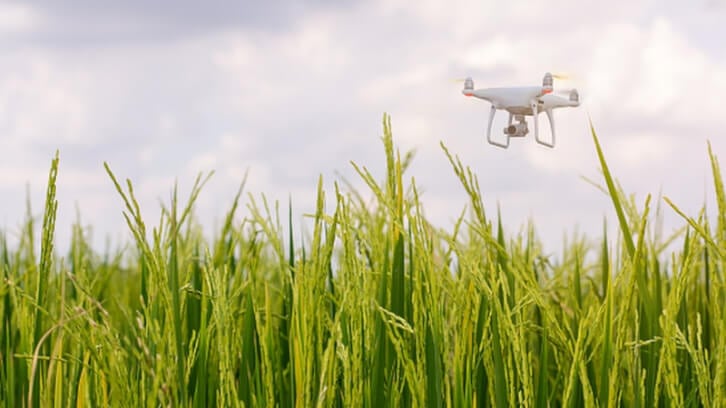DJI Agriculture is a subsidiary of China-based technology firm DJI which claims to be the world’s leading producer of camera drones. As per its name, this arm specialises in the innovation and advancement of agriculture drones.
According to the firm’s recently-published DJI Agriculture Drone Insight Report 2022/23, global policy trends are strongly moving towards the acceptance of this technology for agricultural purposes, where previously the industry faced many challenges in terms of privacy and safety concerns.
“The data from this report shows that governments around the world [are increasingly encouraging] farmers to adopt the use of agricultural drones and smart farming methods to increase food production in a more scientific, sustainable and eco-friendly way,” DJI Agriculture Head of Global Sales Yuan Zhang said via a formal statement.
“Governments around the world are starting to see the many benefits [of this technology], and this shift in perspective has led to the embracing of a newfound understanding and openness towards agricultural drones in terms of both management and processes.
“Some examples include gradual opening up in Europe which has already seen a proposal to revise the regulations governing drone spraying of crops, and several Predefined Risk Assessments (PDRA) involving agricultural drones; as well as several licenses that users have already obtained in the United States for operation over 2022 and 2023.
“Closer to home, earlier in March this year the China Civil Aviation Central and South Regional Administration has also issued Type Certificates and Production Certificates to [several models of] DJI’s agricultural drones.”
Type Certificates designate approval of the drone design and Production Certificates are licenses that designate approval to start production of the drones.
In the report, the firm also highlighted that agriculture drones can potentially have very significant positive impacts for various crops crucial to the economy of Asian countries such as potatoes and rice.
“The highest concentrations of potato production are in Asia and Europe, and the top five countries in terms of potato planting area are China, Russia, India, Ukraine and Bangladesh,” the firm stated.
“FAO statistics list China as the world’s largest potato producer, with some 6,666,666 hectares worth of potato planting area in 2020 – [and all potato farmers know that] this crop is always at risk of diseases such as blight and ring rot, which can spread rapidly.
“Agricultural drones can help to reduce the risk of affected yields due being capable of rapidly responding to threats by working to spray the required pesticides even through the night and not being restricted by the affected terrain; as well as being able to achieve uniform spraying in terms of speed and height and better atomisation than manual spraying which makes for better absorbability.
“Similarly, drones can also play an important role when it comes to rice, for example in places such as Kaizu Town in Japan’s Gifu Prefecture where Hoshijirushi rice is the main variant – here, rice is so important that it accounts for a quarter of local agriculture produce revenue that is estimated at around JPY5.7bn (US$37.9mn).
“Here, non-uniform fertilisation and traditional machinery access to the muddy paddy fields are amongst the main issues that farmers face, both of which drones have the potential to alleviate.”
Other applications
Agriculture drone uses are not only limited to the spraying of substances, but in citrus farms DJI has also innovated these to shake fruit trees to remove withered flowers and reduce the risk of the botrytis fungus making an appearance.
“A common method is artificial flower shaking which involves grasping the main fruit tree trunk and manually shaking it quickly – this is of course relatively difficult, and only about 0.66 hectares can be completed everyday,” said DJI.
“Conversely, using a drone to generate wind force and shake the flowers off can treat up to 10 hectares of plants a day, which is high in efficiency and low in cost.”
The firm has established its own DJI Academy to train users on how to use agricultural drones, with a focus on users in major producer markets such as Thailand, Turkey, Mexico and Brazil.


